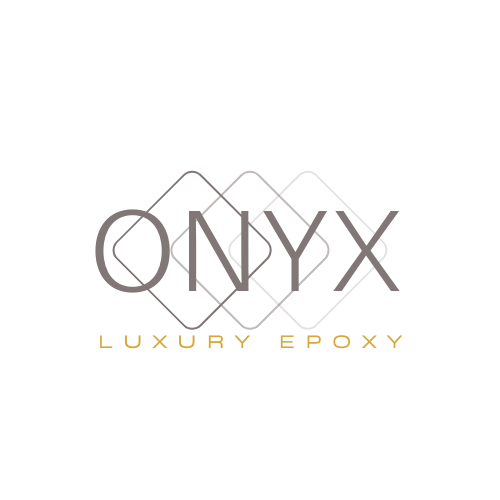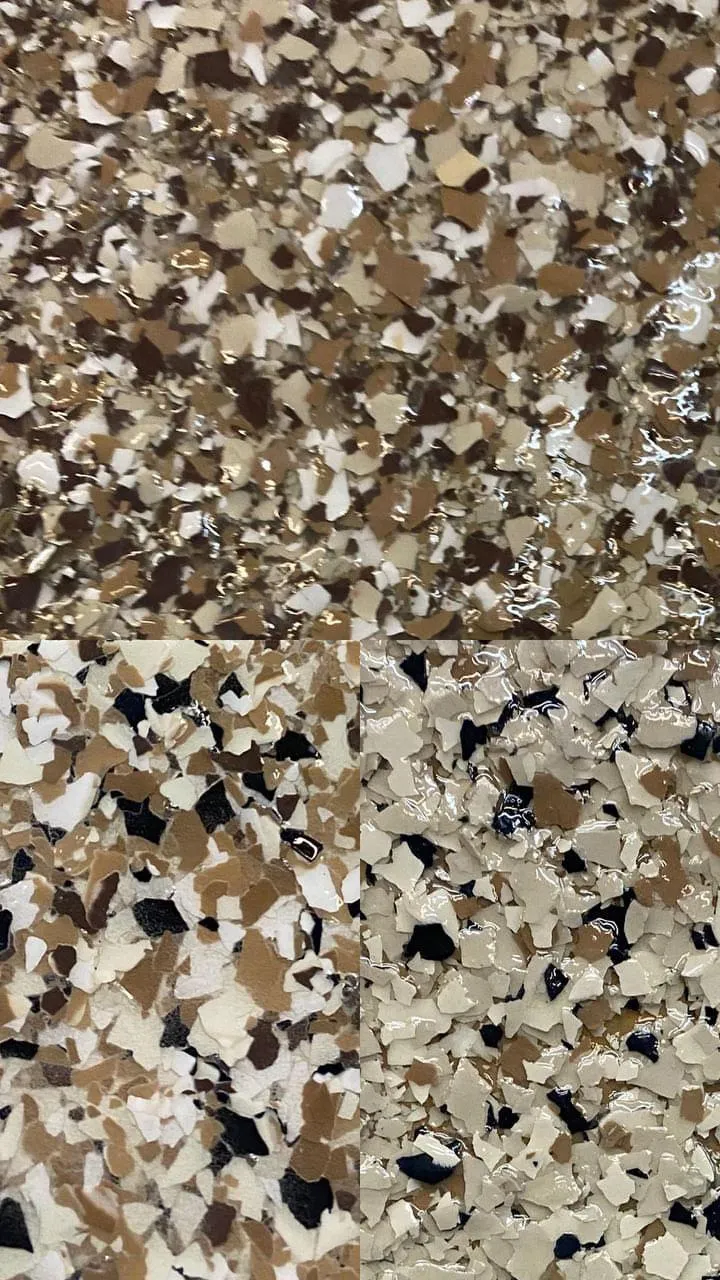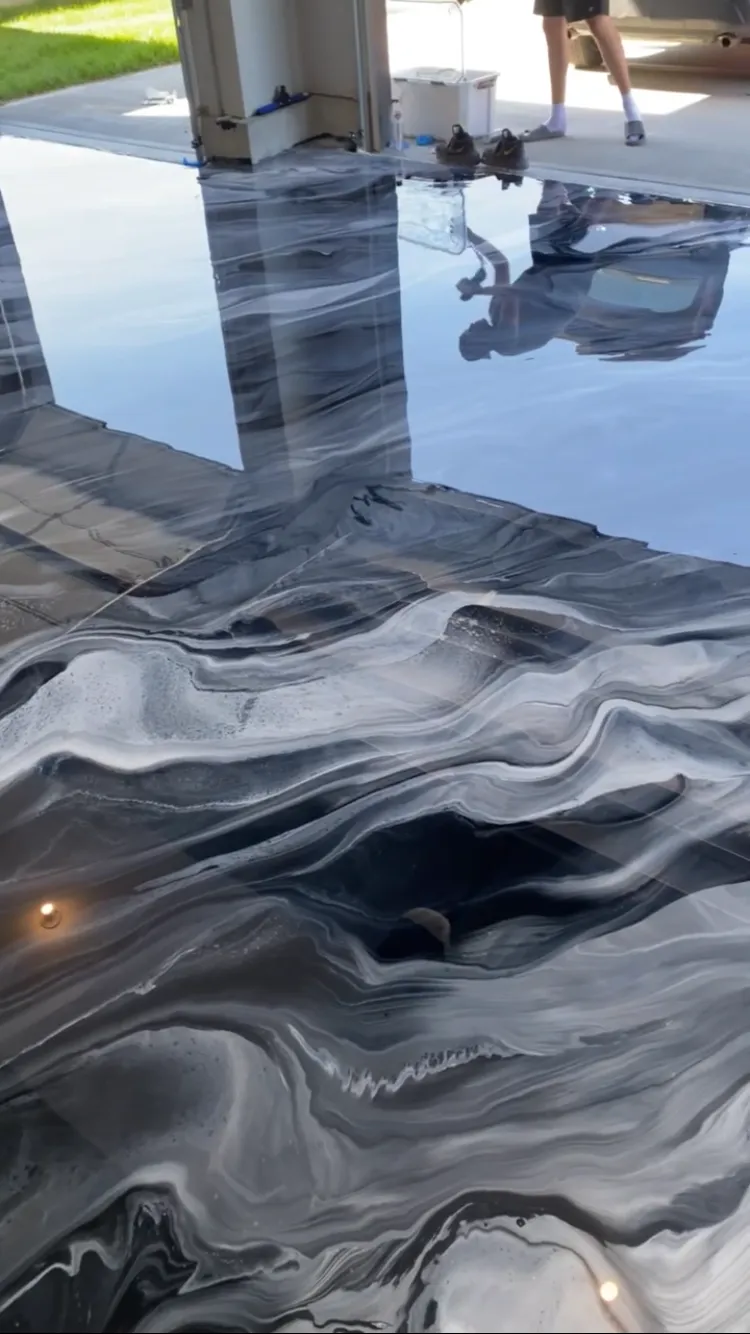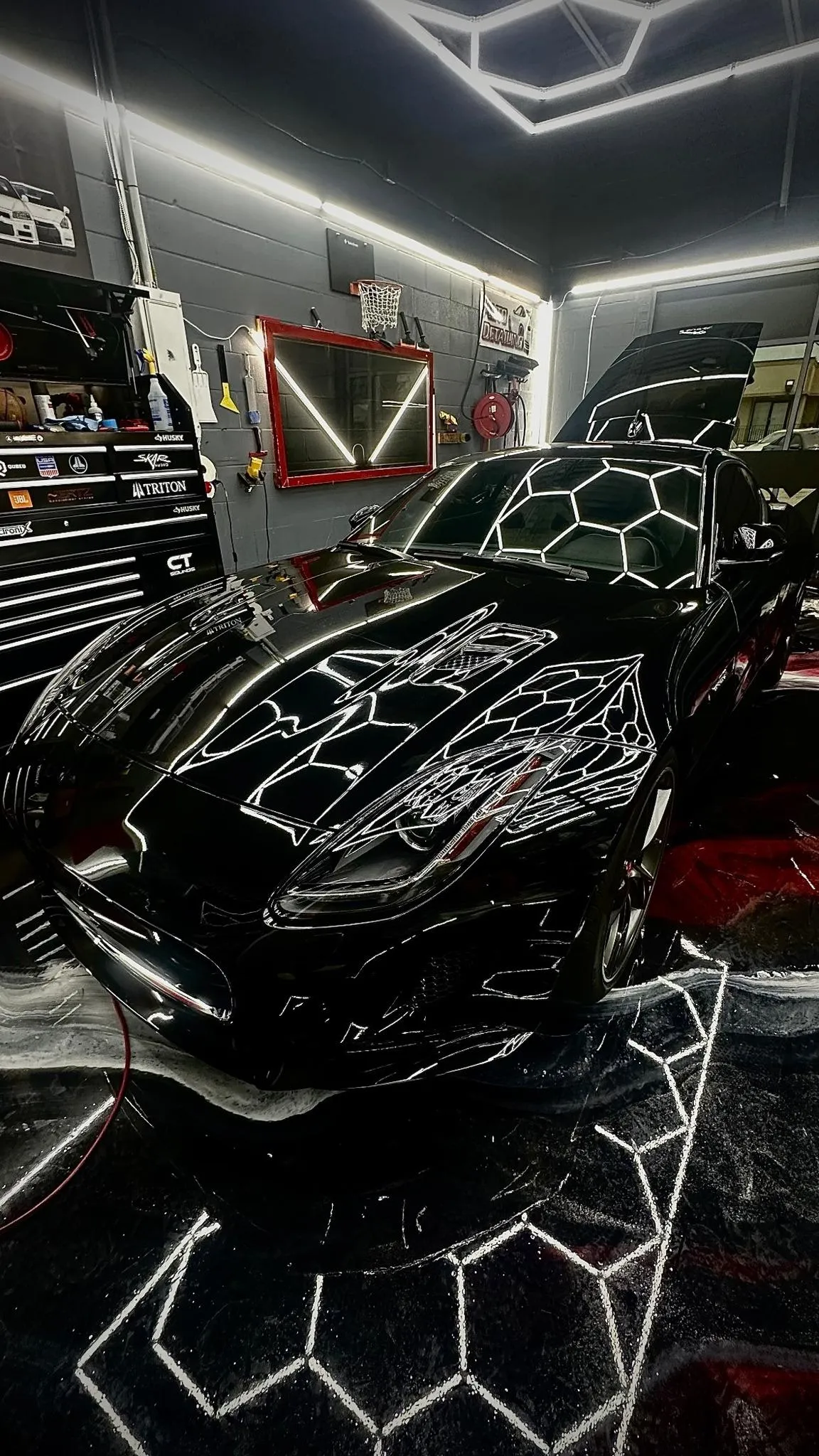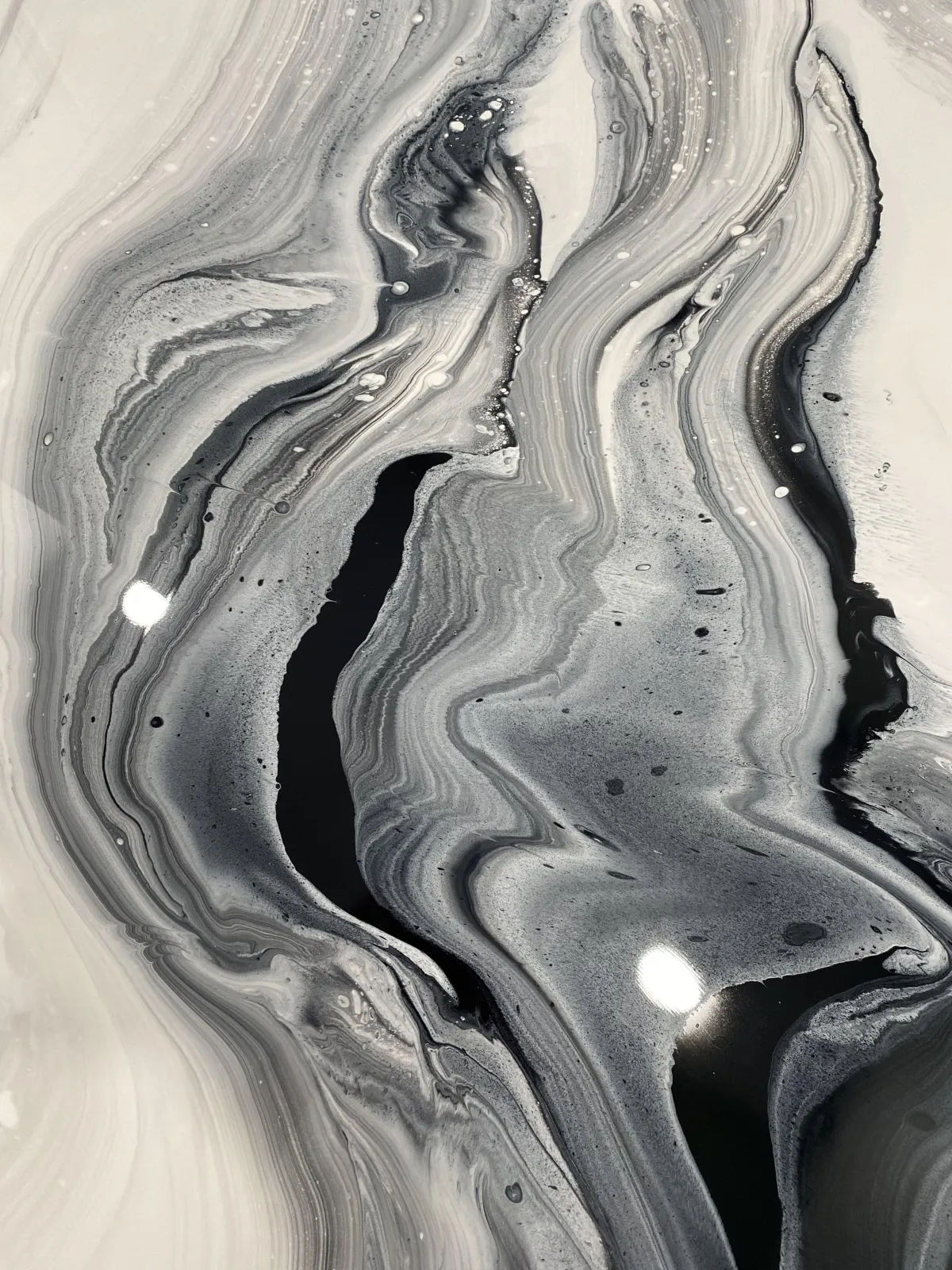
Why Epoxy Flooring is the Smart Choice for Your Home: A Comprehensive Cost-Benefit Analysis
When it comes to choosing flooring for your home, the decision can be overwhelming given the plethora of options available. Among the choices, epoxy flooring stands out as a durable, aesthetically pleasing, and cost-effective solution. This blog post aims to provide a comprehensive comparison between the upfront costs of epoxy flooring and its long-term financial and lifestyle benefits, including savings in maintenance, durability, and replacement costs. By the end of this analysis, you will understand why epoxy flooring is a smart investment for your home, particularly if you reside in the Midwest region of America.
Upfront Cost Analysis
Assumptions:
To assess the total cost of ownership over time, we start with the following assumptions regarding initial costs, expected lifespan, and annual maintenance costs for various flooring types:
Explanation:
The Initial Cost per Square Foot values provided here are average estimates and can vary based on factors such as material quality, regional price differences, and specific installation conditions. These averages provide a general comparison to help assess the relative costs between flooring options.
Epoxy Flooring: Offers a competitive initial cost with a long lifespan and low maintenance, making it an economical choice over time.
Hardwood Flooring: While visually appealing and traditional, hardwood’s higher initial and maintenance costs, along with a shorter lifespan, make it more expensive in the long run.
Tile Flooring: Durable and long-lasting, but with moderate maintenance costs.
Carpet Flooring: The least expensive upfront, but frequent replacements and higher maintenance costs reduce its long-term value.
Vinyl Flooring: Affordable and low maintenance, but with a shorter lifespan compared to epoxy and tile.
Long-Term Cost Analysis
Here’s how these flooring options compare when considering their total cost over 10, 20, and 30 years:
Explanation:
These total costs include the initial installation cost plus the cumulative maintenance costs over the specified time periods (10, 20, and 30 years).
Epoxy Flooring remains the most cost-effective option across all time frames. The consistent and low maintenance costs help to minimize the total cost of ownership, making it a solid long-term investment.
Hardwood Flooring incurs the highest costs over time, largely due to the need for regular refinishing and eventual replacement. The increase from $36 over 10 years to $92 over 30 years is driven by these ongoing maintenance requirements and the need for potential replacement after 25 years.
Tile Flooring offers durability with moderate costs, which include periodic regrouting and deep cleaning.
Carpet Flooring begins as an inexpensive option but quickly becomes costly due to frequent replacements, especially in high-traffic areas. The costs double over 20 years and nearly triple over 30 years, reflecting these frequent replacement cycles.
Vinyl Flooring remains affordable but doesn't provide the same durability and long-term value as epoxy flooring. The increase from $13 over 10 years to $31 over 30 years includes both maintenance and potential section replacements due to wear and tear.
Epoxy Flooring Costs
Epoxy flooring costs can vary significantly based on the type of epoxy used and the level of customization desired. In 2024, the cost of epoxy flooring ranges from $7 to $20 per square foot. This includes basic epoxy options as well as more premium choices. The installation costs encompass labor and any preparatory work required, such as surface cleaning or leveling.
Customization options can significantly enhance the aesthetic appeal of epoxy flooring but also increase the overall cost. For instance, metallic epoxy finishes, which create a three-dimensional, reflective appearance similar to marble or liquid metal, can add $2 to $5 per square foot, bringing the total cost to $9 to $25 per square foot. Adding color flakes or chips, often used in garages for a speckled texture, increases costs by $1 to $3 per square foot, resulting in a total of $8 to $23 per square foot. Quartz epoxy flooring, known for its durability and slip resistance, particularly in industrial settings, typically adds $2 to $4 per square foot, totaling $9 to $24 per square foot. High-end 3D epoxy flooring, which involves custom images embedded under a clear epoxy layer, can add $5 to $15 per square foot, leading to a total of $12 to $35 per square foot. Additionally, finishes like matte or high-gloss sheens usually add $1 to $2 per square foot, and custom color blends can increase costs by $1 to $3 per square foot, bringing the total to $8 to $23 per square foot.
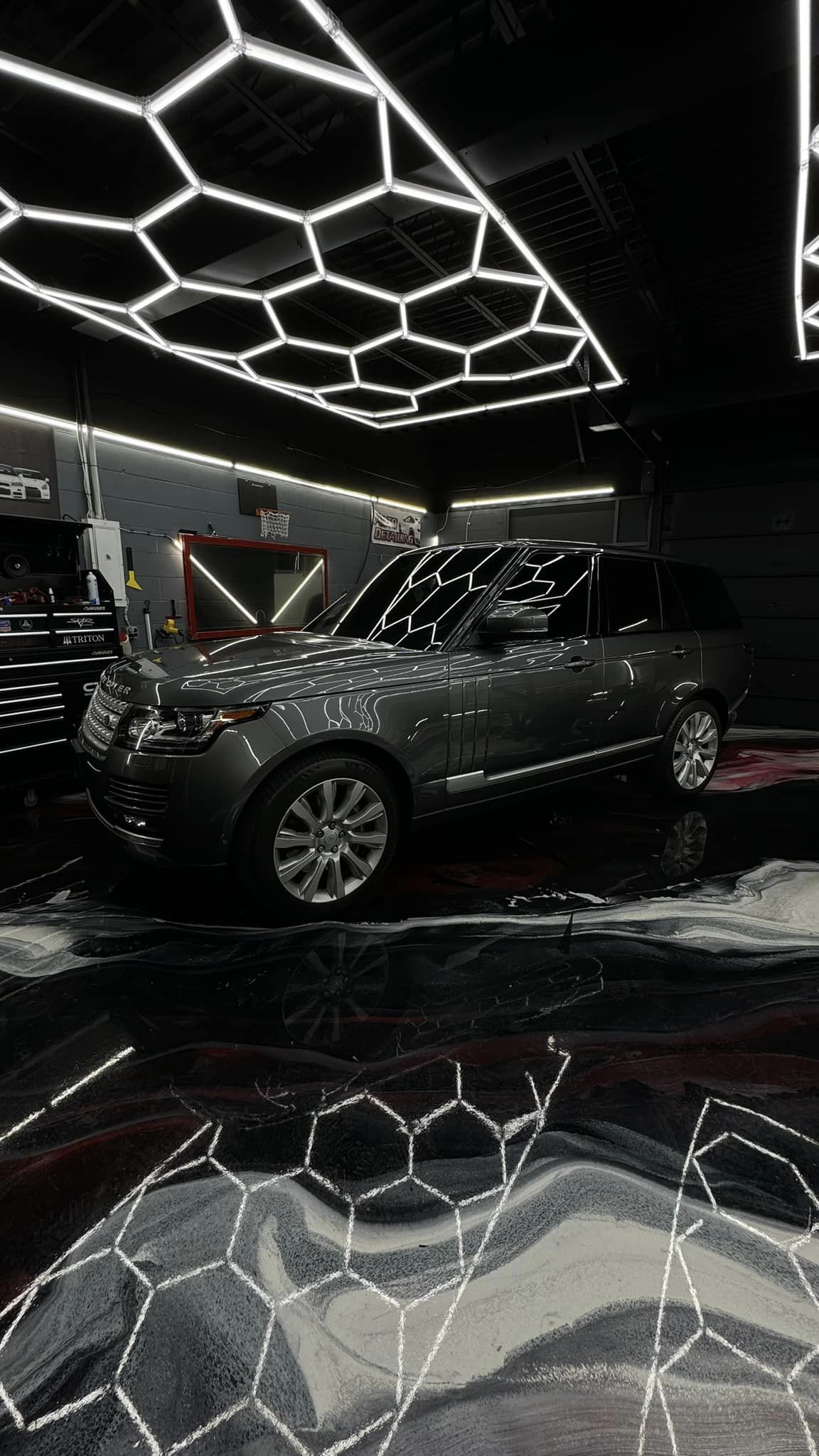
Comparison to Traditional Flooring Options
Hardwood Flooring
Hardwood flooring is a popular choice for its timeless beauty and durability. However, it comes at a higher cost. The material and installation costs for hardwood flooring range from $9 to $23 per square foot, influenced by the type of wood used. Higher-end wood types, such as mahogany or Brazilian cherry, can significantly increase the cost. Additionally, hardwood floors require regular maintenance, including polishing and refinishing, which can add to the long-term expenses.
Tile Flooring
Tile flooring offers a wide range of options, from ceramic to porcelain to natural stone, each with its own cost implications. The costs for tile flooring range from $6 to $30 per square foot, depending on the material chosen. Ceramic tiles are generally more affordable, while natural stone tiles like marble or granite can be quite expensive. Installation costs also vary, with grouting and sealing adding to the overall expense.
Carpet Flooring
Carpet flooring is often seen as a more affordable option, with material and installation costs ranging from $3 to $10 per square foot. The cost varies based on the quality of the carpet, with higher-end options being more expensive. However, carpets tend to wear out faster than other flooring types, especially in high-traffic areas, leading to more frequent replacements and higher long-term costs.
Vinyl Flooring
Vinyl flooring has gained popularity due to its affordability and versatility. The costs associated with vinyl flooring range from $4 to $12 per square foot, depending on the type, such as luxury vinyl planks or tiles. Vinyl is relatively easy to install and maintain, but it may not offer the same level of durability and aesthetic appeal as other flooring options.
Long-Term Savings Analysis
Maintenance Costs
Maintenance costs for different flooring systems vary significantly based on the material and environmental conditions. Epoxy flooring, known for its durability and resistance to wear and chemicals, generally incurs lower maintenance costs over its lifespan. Periodic recoating may be necessary, especially in high-traffic or industrial areas, but this is relatively infrequent and cost-effective. Research indicates that enhancements like fiber reinforcement in epoxy coatings can further reduce long-term maintenance expenses .
In contrast, traditional flooring options such as wood, tile, or carpet often require more frequent maintenance, leading to higher costs over time. For example, wood flooring, while aesthetically pleasing, demands regular refinishing to maintain its appearance and durability, especially in moisture-prone areas, contributing to its higher lifecycle costs . Tile flooring requires regrouting and deep cleaning to maintain its appearance, while carpet flooring needs professional deep cleaning and stain removal. Vinyl flooring, although relatively low-maintenance, may require replacing worn sections over time.
Durability and Longevity
Studies consistently highlight the superior durability and longevity of epoxy flooring compared to traditional options. Epoxy flooring, renowned for its resistance to mechanical wear, chemical exposure, and environmental stress, outperforms traditional materials in harsh conditions. For instance, epoxy polymer concrete (EPC) has demonstrated exceptional performance in aggressive environments, maintaining its strength even after prolonged exposure to acidic and alkaline solutions, unlike ordinary cement concrete (OCC), which showed significant degradation . Additionally, epoxy adhesives used in structural applications retain their properties over time, despite exposure to challenging conditions like carbonation, freeze-thaw cycles, and high temperatures . Furthermore, epoxy flooring's durability is further enhanced when reinforced with fiber composites, making it a versatile and long-lasting choice, especially in industrial settings where traditional flooring materials might degrade more rapidly .
Replacement Costs
One of the significant advantages of epoxy flooring is its low likelihood of needing full replacement, reducing long-term costs significantly. In contrast, traditional flooring options often require more frequent replacements due to wear and tear. Hardwood flooring, for instance, may need to be replaced if extensive damage occurs, which can be quite costly. Tile flooring, while durable, can crack over time, necessitating replacement of individual tiles or even entire sections. Carpet flooring, with its shorter lifespan, often needs to be replaced every 5-10 years, especially in high-traffic areas, leading to higher cumulative costs. Vinyl flooring, although durable, may also require replacement due to fading, tearing, or lifting.
Additional Financial Benefits
Increased Property Value
Installing epoxy flooring can significantly enhance the aesthetic appeal and overall value of a home. According to an article from LSL Finishes, epoxy garage floor coatings can increase the value of your home by an average of $8 per square foot. For a 2,000 square foot garage, this could add up to $16,000 to the home's resale value. The coatings enhance curb appeal, improve the functionality of the garage space, and are a durable, low-maintenance investment that can pay off when selling your home. For more details, you can visit the full article here.
Lower Insurance Premiums
While there is limited direct data linking epoxy flooring to reductions in homeowners' insurance premiums, the durability and resistance of epoxy flooring to common damages like water, stains, and fire might reduce the risk of claims, potentially leading to lower insurance costs. Some insurance companies might consider the reduced likelihood of damage or the enhanced safety features, such as slip resistance, when assessing premiums. It would be beneficial to consult with insurance providers directly to understand how such upgrades could affect your premiums.
Energy Efficiency
Epoxy flooring can also contribute to energy savings. Its reflective properties can help reduce heating or cooling costs by maintaining a more consistent temperature within the home. This can be particularly beneficial in regions with extreme temperatures, such as the Midwest, where energy efficiency is a significant concern for homeowners.
Environmental and Health Benefits
Eco-Friendly Materials
There is increasing interest in eco-friendly epoxy products that minimize the environmental impact, particularly those with low volatile organic compounds (VOCs). Research has highlighted developments in low-VOC and bio-based epoxy resins, which are being explored as alternatives to traditional epoxy systems. For example, a study on a novel bio-based epoxy adhesive made from epoxidized poly-beta-myrcene demonstrated superior environmental performance compared to conventional epoxy in various environmental impact categories, making it a promising eco-friendly option. Additionally, there are efforts to develop epoxy systems using renewable materials such as vegetable oils, which have been shown to reduce environmental impacts while maintaining desirable properties like durability and chemical resistance.
Allergen Resistance
Epoxy flooring is often highlighted for its non-porous surface, which prevents dust, pollen, and other allergens from accumulating, making it a hypoallergenic flooring option. While direct studies or testimonials specific to allergen resistance in epoxy flooring were not found, the general properties of epoxy, such as its smooth and impermeable surface, contribute to reducing allergen exposure in indoor environments. These properties make it particularly beneficial in homes with allergy sufferers, as the flooring is easy to clean and maintain, reducing the presence of allergens compared to more porous flooring materials like carpet.
Customization and Design Flexibility
Endless Design Options
One of the standout features of epoxy flooring is its wide range of customization options. Homeowners can choose from various colors, patterns, and finishes to create a truly unique space. Metallic epoxy finishes can create a three-dimensional, reflective appearance similar to marble or liquid metal. Color flakes or chips can be added for a speckled texture, often used in garages. Quartz epoxy flooring is known for its durability and slip resistance, making it ideal for industrial settings. High-end 3D epoxy flooring involves custom images embedded under a clear epoxy layer, creating a stunning visual effect. Additionally, finishes like matte or high-gloss sheens and custom color blends offer further customization possibilities.
Seamless Integration
Epoxy flooring can seamlessly integrate with other design elements in a home, whether modern or traditional, enhancing the overall aesthetic and cohesion of the space. Its versatility allows it to complement various interior design styles, from sleek and contemporary to warm and rustic. This flexibility makes epoxy flooring an excellent choice for homeowners looking to create a cohesive and visually appealing environment.
Potential Tax Benefits
Home Improvement Tax Deductions
Tax benefits or deductions related to epoxy flooring as a home improvement can vary depending on the location and specific circumstances of the project. Generally, if epoxy flooring is considered a capital improvement—meaning it adds value, extends the life of your property, or adapts it to new uses—it could increase the cost basis of your home, potentially reducing capital gains tax when you sell the property. Additionally, if the epoxy flooring contributes to energy efficiency or improves indoor air quality through the use of low-VOC products, you might qualify for specific tax credits or deductions, although this is more common with larger energy-efficient home improvements. If you have a home office, the cost of installing epoxy flooring in that area might be partially deductible as a business expense. Furthermore, if the flooring is installed for medical reasons, such as reducing allergens or enhancing accessibility, it could be deductible as a medical expense, provided you meet the IRS threshold for such deductions. Consulting a tax professional is essential to ensure you take full advantage of any available tax benefits and to navigate the complexities of tax rules specific to your situation.
Real-World Case Studies
Client Success Stories
Sandeep had recently purchased a new home in Overland Park, Kansas, and was eager to upgrade the basement into a functional and stylish space. However, during the renovation, he discovered moisture issues in the basement, which raised concerns about potential damage and long-term implications. Seeking a solution that offered both elegance and protection, Sandeep was introduced to epoxy flooring. Initially, he was only considering a small portion of the basement for the upgrade, unsure of how epoxy would fit into his overall design vision. After learning that epoxy creates a seamless, non-porous barrier ideal for moisture-prone areas and seeing samples of the high-end finishes available, Sandeep decided to proceed with the installation.
The results exceeded his expectations. The epoxy flooring not only provided the moisture protection he needed but also transformed the basement into a sleek, luxurious space. Impressed by the outcome, Sandeep decided to extend the epoxy flooring throughout the entire basement, ensuring comprehensive protection and a consistent aesthetic. The success of the basement project led him to expand the use of epoxy flooring to the upper levels of his home and the garage as well. He was particularly drawn to the idea of having a durable, low-maintenance surface that looked stunning and offered peace of mind against potential moisture issues. Sandeep reflects on his decision with satisfaction, noting that epoxy flooring was the perfect choice to safeguard his investment while enhancing the beauty of his home.
Before-and-After Comparisons
Visual demonstrations are powerful tools to showcase the transformative impact of epoxy flooring. Before-and-after photos can highlight the dramatic changes in both appearance and functionality that epoxy flooring can bring to a space. These comparisons reinforce the practical and aesthetic benefits discussed in the analysis, providing tangible evidence of the value epoxy flooring can add to a home.
Comparison to Emerging Trends
Comparison to Other Modern Flooring Trends
Epoxy flooring stands out among several emerging flooring trends, offering unique advantages in terms of durability, customization, and maintenance. Compared to polished concrete, which is popular for its modern, industrial look, epoxy provides better resistance to chemicals and stains while offering a wider range of aesthetic customization options. While polished concrete requires regular resealing to maintain its shine, epoxy’s low-maintenance, seamless finish makes it a more practical choice for many homeowners. Luxury Vinyl Plank (LVP) is another trend gaining traction due to its affordability and ability to mimic natural materials like wood or stone. However, LVP doesn’t match epoxy’s durability, particularly in high-traffic areas or spaces prone to heavy use. Epoxy also offers superior water resistance with its seamless surface, making it ideal for basements and garages, and allows for more intricate design possibilities. Overall, epoxy flooring’s ability to combine aesthetic versatility with exceptional durability makes it a compelling alternative to these popular flooring trends.
Future-Proofing Your Home
Choosing epoxy flooring can help future-proof a home by providing a modern, durable solution that aligns with current and emerging design trends. Its long-lasting nature and low maintenance requirements make it an attractive option for homeowners looking to invest in flooring that will remain stylish and functional for years to come. By opting for epoxy flooring, homeowners can ensure their property stays relevant and appealing in the ever-evolving real estate market.
Common Myths and Misconceptions
Debunking Myths
There are several common myths and misconceptions about epoxy flooring that often deter people from considering it for their homes. One widespread belief is that epoxy flooring is only suitable for industrial or commercial spaces, such as factories or garages. In reality, epoxy is a versatile option that can be customized with various colors, patterns, and finishes, making it ideal for residential areas like kitchens, basements, and living rooms. Another misconception is that epoxy flooring is too slippery, especially when wet. However, epoxy can be formulated with anti-slip additives to create a textured surface that reduces the risk of slipping, ensuring safety even in moisture-prone areas. Some people also think that epoxy flooring looks cheap or plastic-like, but with the right finish, it can achieve a high-end, luxurious appearance that rivals more expensive materials like marble or granite. Additionally, there's a belief that epoxy flooring is difficult to maintain, but it’s actually low-maintenance, with a seamless surface that’s easy to clean and resistant to stains and abrasions. Finally, concerns about epoxy flooring cracking or peeling over time are unfounded when it’s properly installed by professionals, as it’s incredibly durable and able to withstand heavy use without showing signs of wear. Addressing these myths helps to clarify the true benefits and versatility of epoxy flooring, making it an attractive option for both residential and commercial applications.
Maintenance Tips and Best Practices
Guidelines for Long-Term Care
To keep epoxy floors looking their best, it’s essential to follow some practical maintenance tips and best practices. Regular sweeping or vacuuming can help remove dirt and debris that can scratch the surface. For deeper cleaning, a mild detergent mixed with water can be used to mop the floor. It’s important to avoid using harsh chemicals or abrasive cleaning tools, as they can damage the epoxy coating. Periodic recoating may be necessary, especially in high-traffic areas, to maintain the floor’s appearance and durability. By following these guidelines, homeowners can ensure their epoxy floors remain in excellent condition for years to come.
Comparative Maintenance Effort
Compared to traditional flooring options, epoxy flooring requires significantly less maintenance. Hardwood floors need regular polishing and refinishing to maintain their appearance, while tile floors require regrouting and deep cleaning. Carpet floors demand frequent vacuuming and professional cleaning to remove stains and allergens. Vinyl floors, although relatively low-maintenance, may need replacing worn sections over time. In contrast, epoxy flooring’s seamless surface is easy to clean and resistant to stains and abrasions, making it a low-maintenance and cost-effective choice for homeowners.
Total Cost of Ownership
Epoxy Flooring
Over a 10, 20, and 30-year period, epoxy flooring proves to be a cost-effective option compared to traditional flooring choices. With an initial installation cost of $10 per square foot and low maintenance costs of $0.50 per square foot annually, the total cost for epoxy flooring amounts to $15 over 10 years, $20 over 20 years, and $25 over 30 years.
Traditional Flooring Options
Hardwood Flooring: Starting at $16 per square foot with higher maintenance costs of $2 per square foot per year, hardwood flooring totals $36 over 10 years, $56 over 20 years, and $92 over 30 years, including potential replacement after 25 years.
Tile Flooring: With an initial cost of $18 per square foot and moderate maintenance costs of $1 per square foot annually, tile flooring totals $28, $38, and $48 over the same periods, respectively.
Carpet Flooring: While cheaper initially at $7 per square foot, carpet incurs higher long-term costs due to frequent replacements every 10-15 years, totaling $17 over 10 years, $34 over 20 years, and $51 over 30 years.
Vinyl Flooring: With a cost of $8 per square foot and low maintenance costs of $0.50 per square foot annually, vinyl flooring totals $13 over 10 years, $18 over 20 years, and $31 over 30 years.
Epoxy flooring, despite a similar or slightly higher upfront cost, offers significant savings over time due to its durability and low maintenance needs, making it a competitive and practical choice for both residential and commercial applications.
In summary, epoxy flooring offers numerous financial advantages over traditional flooring options. Its initial costs are comparable, but its low maintenance requirements, superior durability, and long lifespan result in significant long-term savings. Additionally, epoxy flooring can enhance property value, contribute to energy efficiency, and provide environmental and health benefits.
For homeowners looking to enhance both the value and beauty of their home while minimizing long-term costs, epoxy flooring is a wise investment. Its versatility, durability, and low maintenance make it an attractive option for various residential applications. Contact Onyx Luxury Epoxy today for a free consultation and estimate to explore how epoxy flooring can transform your home.
By choosing epoxy flooring, you are investing in a durable, cost-effective, and aesthetically pleasing solution that will stand the test of time.
